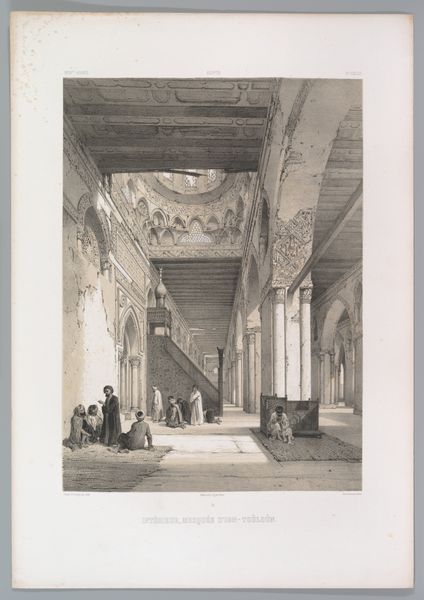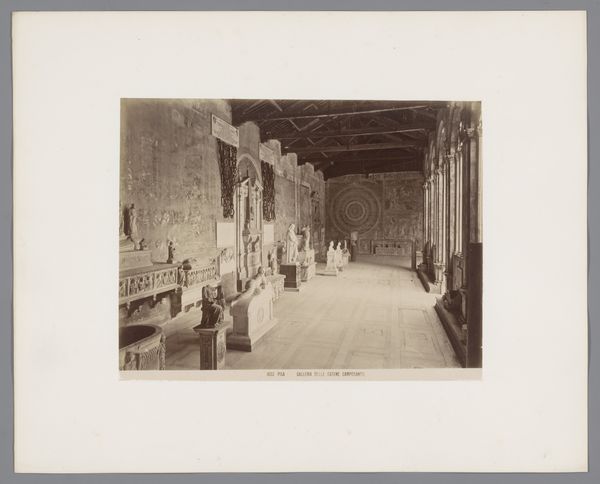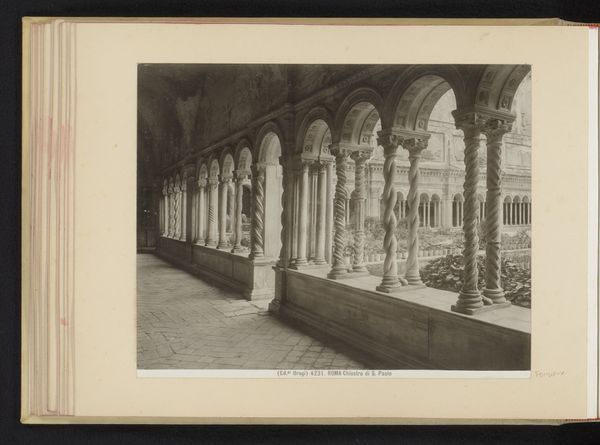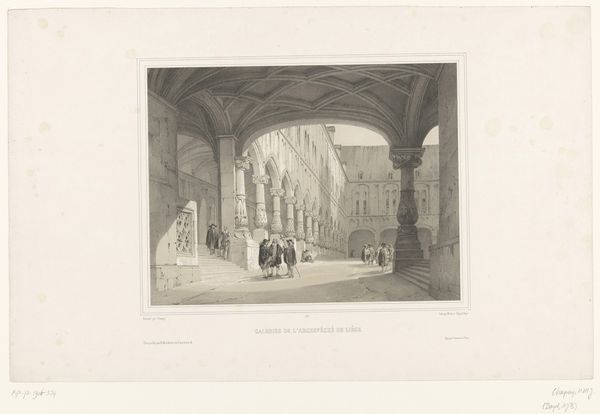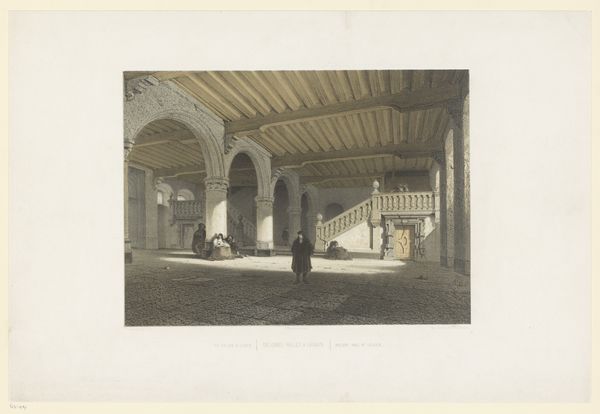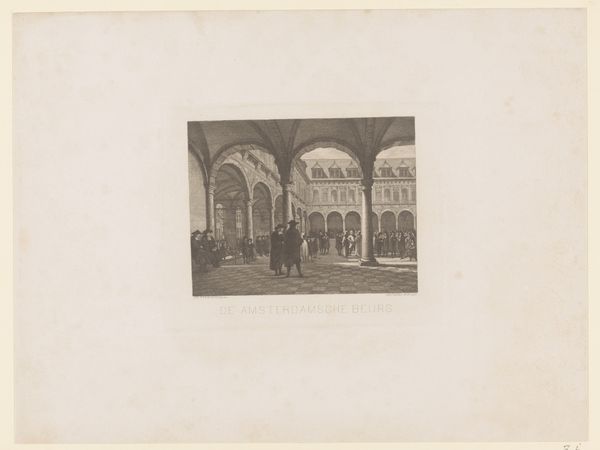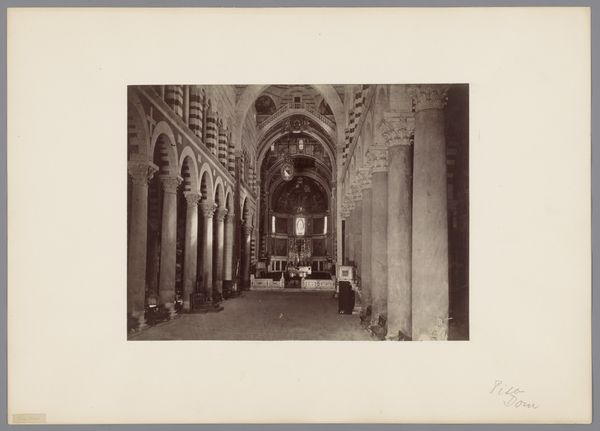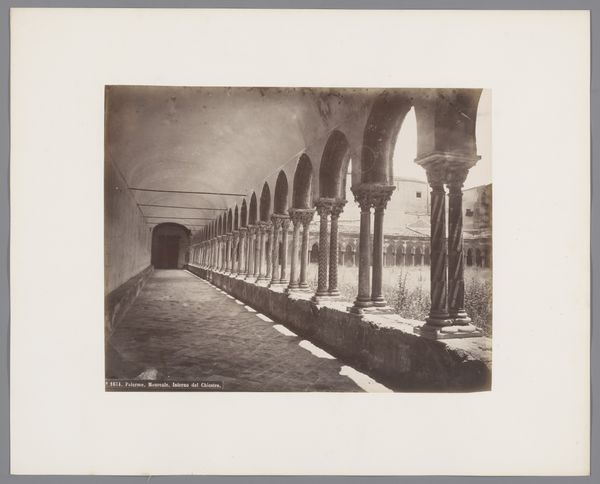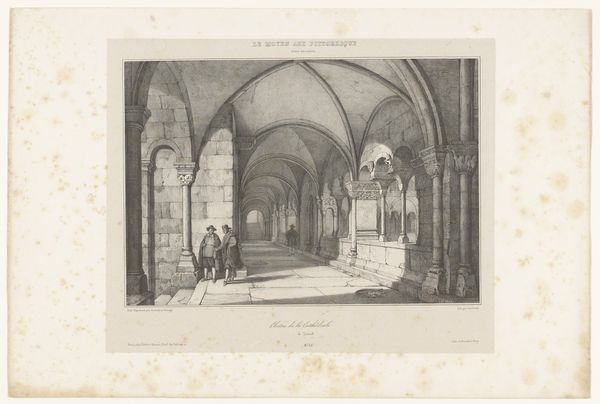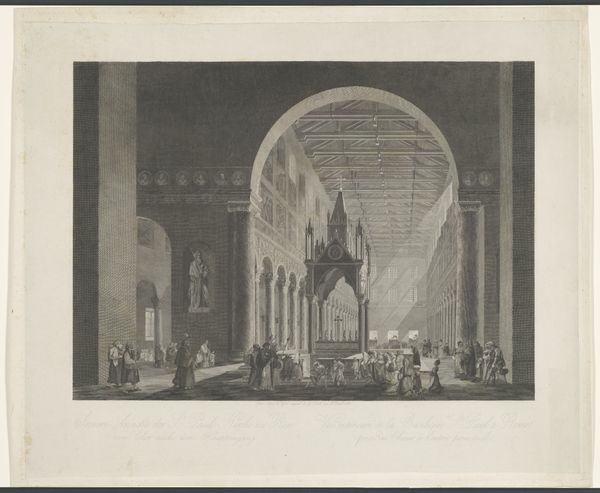
drawing, paper, ink, pencil
#
drawing
#
narrative-art
#
landscape
#
figuration
#
paper
#
ink
#
romanticism
#
pencil
#
chiaroscuro
#
line
#
genre-painting
#
academic-art
#
watercolor
#
realism
Dimensions: height 365 mm, width 545 mm
Copyright: Rijks Museum: Open Domain
Editor: So, this is "Kloostergang te Tongeren," a drawing made with ink and pencil on paper by Louis Haghe in 1845, and housed in the Rijksmuseum. I’m immediately struck by how incredibly detailed it is. The artist really captured the light filtering through the arches. It feels almost… theatrical. What's your take on it? Curator: Theatrical, yes! It’s almost like a stage set, isn’t it? That raking light… it pulls you right in. It feels like Haghe is inviting us into a story, maybe one of contemplation and quiet reflection within these ancient walls. Notice how he uses the chiaroscuro technique – that strong contrast between light and shadow – not just for visual drama but to give a real sense of depth and volume to the cloister. Does it remind you of Piranesi's architectural prints? Editor: I see what you mean about Piranesi! That emphasis on perspective and vastness… though Piranesi often felt more overtly dramatic, even unsettling. This is…serene? Curator: Serene, perhaps, on the surface. But there's a current of something else flowing underneath, isn't there? The lone figure, slightly apart from the others… are they truly at peace, or wrestling with something more internal? These Romantic-era artists were masters at imbuing their landscapes with psychological depth, hinting at the vastness of the human soul as much as the physical world. Do you think it’s more than a genre painting? Editor: It could be. Maybe it captures a moment of introspection in monastic life...or maybe it’s just really beautiful draftsmanship! Thanks for this—I’m starting to see a little more than just architectural detail. Curator: The beauty lies in the layers. Each viewing reveals another hidden echo. That's the magic, isn’t it?
Comments
No comments
Be the first to comment and join the conversation on the ultimate creative platform.
